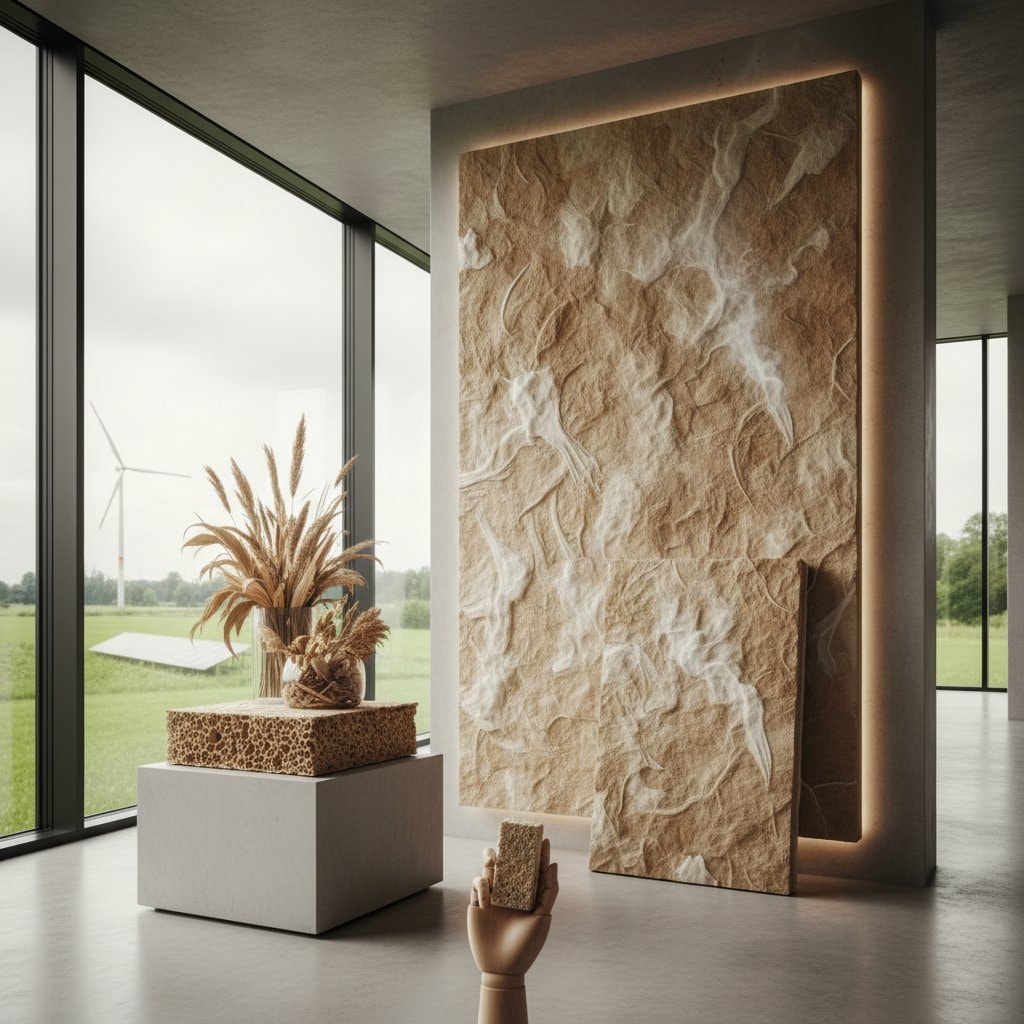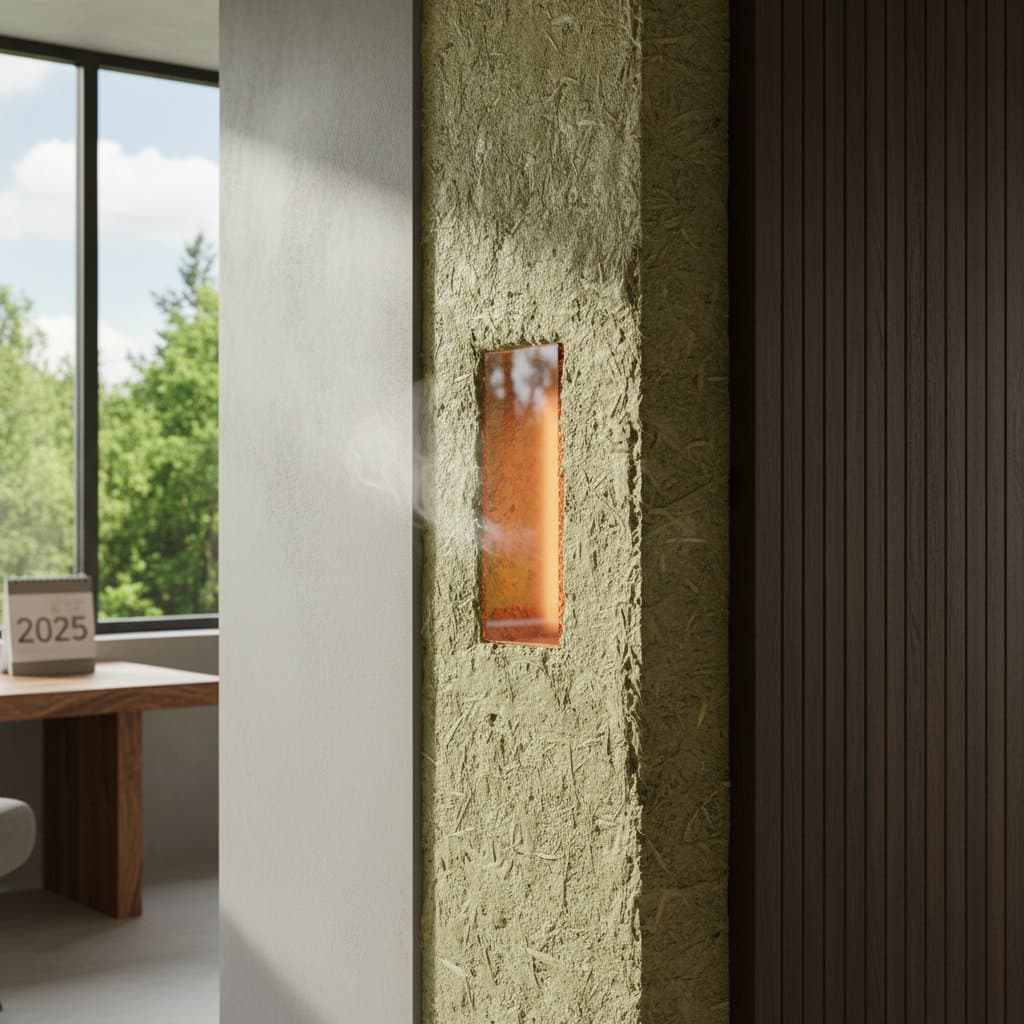Key Advantages of Mycelium Insulation
- Mycelium insulation utilizes fungal networks to create a sustainable alternative to traditional materials.
- It delivers inherent fire resistance, effective thermal insulation, and complete biodegradability without releasing harmful substances.
- This material supports regenerative building practices, yielding environmental gains alongside enhanced architectural functionality.
- Property owners benefit from decreased carbon emissions, simplified disposal processes, and improved indoor environmental quality.
Mycelium Insulation Leads 2025 Sustainability Innovations
Green building professionals observe homeowners pursuing advanced sustainable materials, yet many conventional options depend on synthetic components or resource-heavy manufacturing. Envision a residence enveloped in a breathable, organic barrier derived from agricultural residues. The atmosphere inside remains crisp, acoustics subdued, and the structure contributes positively to ecological balance. Mycelium insulation embodies this vision and emerges as a focal point in contemporary sustainable architecture.
The Fundamentals of Mycelium Insulation
Mycelium consists of the thread-like filaments that form the root system of fungi. When grown alongside substrates such as corn stalks or hemp fibers, it binds these elements into a lightweight, rigid foam suitable for insulation panels or structural blocks. A subsequent heat treatment halts fungal development, resulting in a durable, non-living product.
Professionals in sustainable construction recognize this approach as more than innovative; it combines environmental efficacy with everyday practicality. Mycelium insulation attains thermal resistance ratings of R-3 to R-4 per inch, aligning with fiberglass or cellulose performance, yet avoids microplastic pollution and chemical additives.
Drawbacks of Traditional Insulation Options
Standard insulation types carry significant ecological burdens. Fiberglass production demands substantial energy inputs, and foam insulation emits volatile organic compounds that compromise air quality. In moisture-prone areas, these synthetics retain water, fostering mold growth and shortening service life.
Mycelium insulation addresses these issues through its inherent properties. The material permits vapor diffusion while retaining thermal integrity, fostering uniform temperature regulation. Field research indicates potential reductions in heating and cooling demands by up to 20 percent.
Essential Benefits for Property Owners and Construction Teams
Biodegradability and Resource Conservation
Mycelium insulation decomposes fully in compost systems at the conclusion of its use cycle. Rather than contributing to landfills, it enriches soil as nutrient-rich matter. Construction remnants serve as mulch for landscaping or barriers against soil erosion.
Enhanced Fire and Pest Protection
Mycelium withstands high temperatures without melting or producing toxic gases, unlike plastic foams. Its composition forms a char layer under heat exposure, satisfying global fire safety benchmarks. The material deters insects and rodents naturally, eliminating the need for pesticides.
Superior Sound and Temperature Management
The open-cell structure of mycelium panels dampens noise effectively, promoting tranquil indoor spaces. These same voids capture air for consistent insulation, maintaining comfort in varying weather from sweltering summers to harsh winters.
Minimal Carbon Impact
Production occurs at ambient temperatures with waste feedstocks, yielding a low embodied carbon profile. A single square meter of mycelium insulation sequesters several kilograms of CO2 equivalent when compared to foam or fiberglass counterparts.
Strategies to Enhance Residential Energy Performance
For those integrating mycelium insulation, consider these targeted recommendations:
-
Engage a regional sustainable construction specialist familiar with mycelium applications in local conditions. Prioritize moisture management and airflow systems for sustained performance.
-
Source verified products from providers ensuring uncontaminated substrates and standardized cultivation protocols.
-
Integrate mycelium with permeable finishes like lime-based or clay plasters to preserve vapor permeability.
-
Perform a comprehensive energy assessment prior to implementation to quantify savings and pinpoint complementary improvements.
Installation Economics and Methods
Mycelium insulation pricing ranges from $2.50 to $4.00 per square foot, influenced by thickness and production volume. Although initial costs exceed those of fiberglass, long-term gains in efficiency, waste handling, and occupant health typically recoup the investment within several years.
Panels adapt to conventional framing methods and yield to standard cutting tools without generating irritants, thus requiring no specialized safety equipment. Larger-scale endeavors benefit from prefabricated sections that streamline assembly and minimize on-site labor.
Sustainable construction advisors suggest pairing mycelium with complementary elements, such as bamboo structural components or reclaimed timber surfaces. Such integrations foster resilient, adaptive living environments.
Embracing Regenerative Building Materials
Professionals affirm that mycelium insulation signals a progression from mere sustainability toward active ecological restoration, converting byproducts into functional architecture. Innovators worldwide apply it beyond walls to decorative panels and soundproofing elements.
Effective adoption demands proactive design and partnerships with qualified experts. Sustainable building platforms connect users with certified professionals for consultations, material procurement, and customized project support. Thoughtful implementation yields residences that harmonize with surrounding ecosystems, delivering vitality, optimization, and profound environmental alignment.









